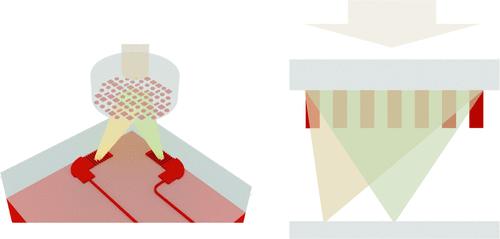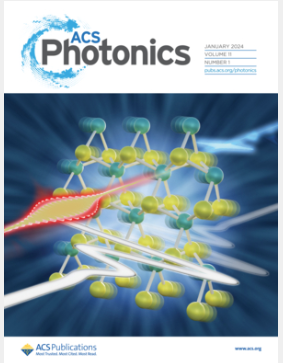相干光子集成激光雷达自由空间双极化深度学习接收天线设计
IF 6.7
1区 物理与天体物理
Q1 MATERIALS SCIENCE, MULTIDISCIPLINARY
引用次数: 0
摘要
双极化接收天线是全固态相干探测激光雷达系统的关键部件之一。尽管各种光子接收天线已经尝试实现不同偏振光的耦合,但在自由空间光耦合效率、紧凑的占地面积和设计复杂性方面仍然存在重大挑战。本文提出了一种集成超透镜模块和光栅耦合器模块的高效紧凑型dpa。超透镜模块采用多形元原子,有效提高了双偏振态的聚焦效率。优化后的光栅耦合器采用混合深度学习网络和粒子群优化(PSO)算法设计,有效地将来自超透镜的聚焦光束耦合到两个不同的波导中。该方法大大加快了光栅耦合器的设计过程,与传统的电磁仿真方法相比,速度提高了近1000倍。实验结果验证了该系统的有效性,0°和90°偏振光的最终耦合效率分别为- 5.31和- 5.52 dB。这种集成架构与多层光刻技术兼容,可进一步提高效率,为激光雷达和光通信系统中的偏振不同光接收提供了一种创新的解决方案。本文章由计算机程序翻译,如有差异,请以英文原文为准。

Design of Free-Space Dual-Polarization Receiving Antenna with Deep Learning for Coherent Photonic-Integrated LiDAR
The dual-polarization receiver antenna (DPRA) is one of the most critical components in all-solid-state coherent detection LiDAR systems. Although various photonic receiver antennas have attempted to achieve coupling for differently polarized light, significant challenges regarding free-space optical coupling efficiency, compact footprint, and design complexity persist. This work proposes a high-efficiency compact DPRA by integrating a metalens module with a grating coupler module. The metalens module employs multishaped meta-atoms, effectively enhancing focusing efficiency for dual polarization states. The optimized grating coupler, designed through a hybrid deep learning network combined with a particle swarm optimization (PSO) algorithm, efficiently couples the focused beams from the metalens into two distinct waveguides. This approach substantially accelerates the grating coupler design process, achieving nearly 1000-fold speed improvement compared to conventional electromagnetic simulation methods. Experimental results validate the effectiveness of this system, showing final coupling efficiencies of −5.31 and −5.52 dB for 0 and 90° polarized light. This integrated architecture, compatible with multilayer lithography for further efficiency enhancement, provides an innovative solution for polarization-diverse light reception in LiDAR and optical communication systems.
求助全文
通过发布文献求助,成功后即可免费获取论文全文。
去求助
来源期刊

ACS Photonics
NANOSCIENCE & NANOTECHNOLOGY-MATERIALS SCIENCE, MULTIDISCIPLINARY
CiteScore
11.90
自引率
5.70%
发文量
438
审稿时长
2.3 months
期刊介绍:
Published as soon as accepted and summarized in monthly issues, ACS Photonics will publish Research Articles, Letters, Perspectives, and Reviews, to encompass the full scope of published research in this field.
 求助内容:
求助内容: 应助结果提醒方式:
应助结果提醒方式:


